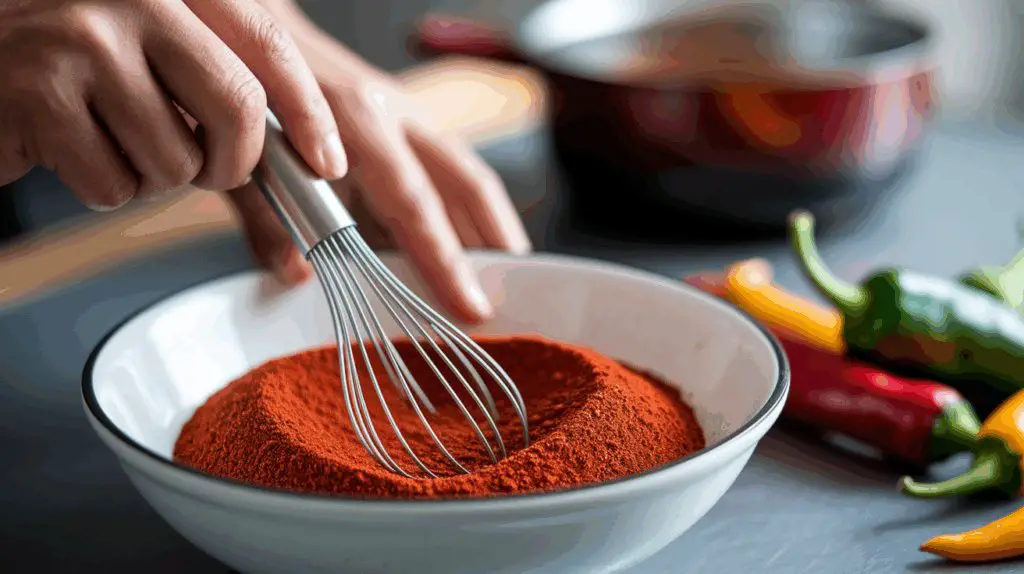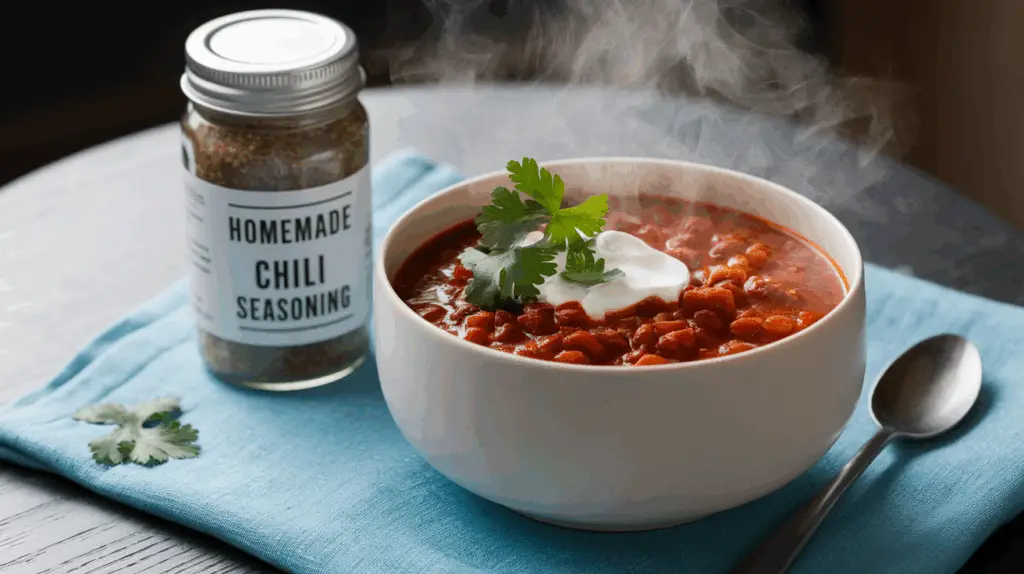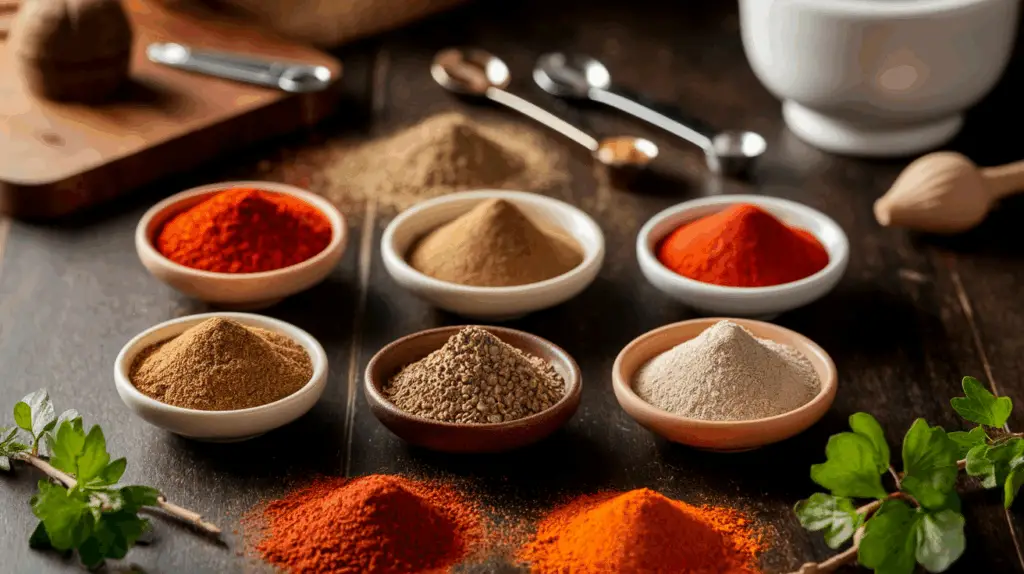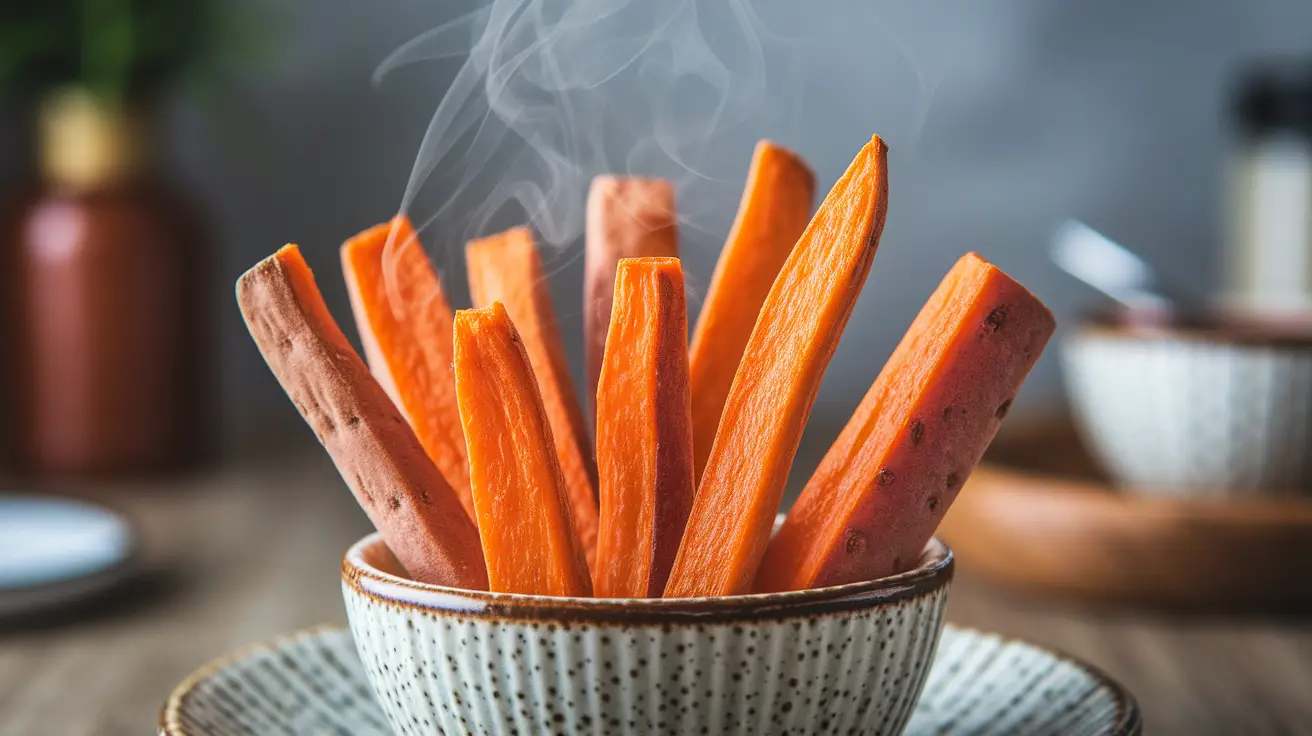Oh, chili. That warm, comforting hug in a bowl, right? But ever wonder what truly makes a chili sing? Spoiler alert: it’s not just the beans (though we can debate that all day!). It’s that perfectly balanced, soul-satisfying chili seasoning. And guess what? You don’t need a fancy store-bought packet for that. Nope, we’re going to dive into the wonderful world of how to make chili seasoning yourself. Trust me, your taste buds (and your wallet!) will thank you.
Why Bother with Homemade Chili Seasoning, You Ask?
“Why go to all that trouble when I can just grab a packet at the grocery store?” I hear you, my friend. Been there, done that. But let me tell you, once you whip up your own chili seasoning mix recipe DIY, there’s no going back. First off, you control the ingredients. No weird anti-caking agents, no mystery “natural flavors,” and definitely no excessive sodium if you don’t want it. FYI, store-bought packets can be surprisingly high in salt. Who needs that when you’re trying to enjoy a hearty bowl of chili, IMO?
Plus, the flavor? Oh, the flavor! When you roast and grind your own spices, the aroma is intoxicating, and the taste is unparalleled. It’s like the difference between a pre-made sandwich and one you craft yourself with fresh, vibrant ingredients. Think about it: you get to customize it to your exact preferences. Love a little extra heat? Go wild with the cayenne! Prefer a smokier note? Paprika is your best friend. This is your culinary playground, and you’re the master chef.
The Foundation: Essential Spices for Your Homemade Chili Seasoning
Alright, let’s get down to brass tacks. What are the non-negotiables for a killer homemade chili seasoning mix? This is where the magic truly happens, my friend. We’re talking about building layers of flavor, not just throwing a bunch of powders together.
- Chili Powder (the MVP, obviously): This is the star of the show. And no, it’s not just ground chilis. Good quality chili powder is usually a blend of dried ground chiles, cumin, oregano, and sometimes garlic powder. For your homemade mix, you can use a store-bought quality chili powder, or for the truly adventurous, dry and grind your own chiles! Ever tried ancho chili powder? It brings a rich, slightly smoky, and fruity depth that’s just chef’s kiss.
- Cumin (Earthy & Warm): You simply can’t have chili without cumin. It brings that distinctive warm, earthy, and slightly pungent aroma that screams “chili night.” I always toast my cumin seeds lightly before grinding them for an extra punch of flavor. Trust me on this; it makes a huge difference.
- Smoked Paprika (for that BBQ Vibe): Regular paprika is fine, but smoked paprika? That’s where the party’s at. It adds a beautiful, subtle smokiness that elevates your chili from good to “OMG, what’s in this?!” I usually opt for a Spanish smoked paprika, either dulce (sweet) or hot, depending on my mood.
- Garlic Powder (Pungent & Aromatic): Essential for savory depth. Don’t confuse it with garlic salt, unless you’re trying to turn your chili into a salt lick. We’re aiming for flavor, not high blood pressure here.
- Onion Powder (Sweet & Savory): Just like garlic powder, onion powder provides a convenient way to add that lovely oniony sweetness without the fuss of sautéing fresh onions for the seasoning itself.
- Oregano (Earthy & Aromatic): Mexican oregano is typically preferred for chili due to its distinct, more citrusy and less minty flavor profile compared to Mediterranean oregano. It adds an authentic touch.
- Cayenne Pepper (for the Kick!): This is where you control the heat. A little pinch for a mild warmth, or a generous dash if you like your chili to bite back. Don’t be shy if you’re a heat seeker!
- Optional but Highly Recommended Spices:
- Coriander (Citrusy & Floral): A beautiful addition that complements cumin and chili powder. It adds a subtle brightness.
- Mustard Powder (Tangy & Sharp): A secret ingredient for some, mustard powder adds a little tang and helps to round out the flavors.
- Cocoa Powder (Unsweetened – for Depth): Just a tiny bit, and I mean tiny, can add an incredible depth and richness to your chili. It won’t make it taste like chocolate, but it will enhance the savory notes. Think of it as a flavor enhancer, not a dessert ingredient!
- Coffee Grounds (Espresso – for Complexity): Another unexpected but brilliant addition for a darker, richer chili. Again, just a small amount. Don’t go overboard, or you’ll have a jittery chili.
Crafting Your Own Chili Masterpiece: A Step-by-Step Guide
So, you’ve got your spices lined up. Now for the fun part: mixing them together! This isn’t rocket science, but there are a few tips to ensure you get the best possible flavor. This is your chance to create your very own recipe for chili seasoning.
- Gather Your Tools: You’ll need measuring spoons, a small bowl, and an airtight container for storage. If you’re going full-on spice master, a spice grinder or a mortar and pestle will be your best friends.
- Measure with Care (or not!): Start with a basic ratio, then adjust to your liking. Here’s my go-to chili seasoning mix recipe to get you started:
- 3 tablespoons good quality chili powder
- 1 tablespoon cumin (freshly toasted and ground is best!)
- 1 tablespoon smoked paprika
- 1 teaspoon garlic powder
- 1 teaspoon onion powder
- 1 teaspoon dried oregano (Mexican preferred)
- 1/2 teaspoon cayenne pepper (adjust to heat preference)
- 1/2 teaspoon salt (you can always add more later, remember?)
- 1/4 teaspoon black pepper
- Toasting (Optional, but Gold!): If you’re using whole spices like cumin seeds or coriander seeds, lightly toast them in a dry pan over medium heat for a few minutes until fragrant. This really brings out their essential oils and deepens their flavor. Be careful not to burn them!
- Grind ‘Em Up: If you toasted whole spices, now’s the time to grind them. A spice grinder (or a clean coffee grinder dedicated to spices) works wonders. A mortar and pestle is also fantastic for a more rustic approach.
- Mix, Mix, Mix: Combine all your measured spices in a bowl. Use a whisk to ensure everything is thoroughly mixed. You want an even distribution of all those glorious flavors.
- Taste and Adjust (The Fun Part!): This is crucial. Don’t just assume it’s perfect. Take a tiny pinch, rub it between your fingers, and smell it. Even better, dissolve a tiny bit in hot water and taste it. Does it need more heat? More earthiness? This is where you fine-tune your homemade chili seasoning. Add more of whatever you feel is missing until it sings to you.
- Store It Right: Transfer your freshly made homemade chili seasoning into an airtight container. A glass jar with a tight-fitting lid is ideal. Store it in a cool, dark place, away from direct sunlight and heat. This will help preserve its potency and flavor for longer. How long, you ask? Generally, homemade spice mixes are best used within 6 months to a year, but really, they’re so good, they probably won’t last that long!
Beyond the Basic: Leveling Up Your Chili Seasoning Game
Ready to get a little fancy? Once you’ve mastered the basic chili seasoning recipe, you can start experimenting with variations. Think of this as your “advanced chili seasoning for dummies” course. 😉
- Regional Chili Flavors: Ever wanted to make a Texas-style chili? Or maybe a Cincinnati chili? Research their typical spice profiles and tweak your base recipe. For a Southwestern kick, consider adding a touch of Diy Southwest Seasoning to your chili.
- Specialty Chiles: Don’t limit yourself to just generic chili powder. Explore dried ancho, guajillo, pasilla, or chipotle chiles. Toast them, rehydrate them, and blend them into a paste for an incredibly deep and authentic chili flavor. This elevates your chili beyond just a spice mix.
- Roasting Your Spices: I already mentioned toasting cumin, but you can toast almost any whole spice before grinding for a more intense flavor. Coriander seeds, whole peppercorns, even whole dried chiles benefit from a quick roast.
- Making a Bigger Batch: If you’re a chili fiend (and who isn’t?), consider doubling or tripling this recipe. Having a larger batch of your best chili seasoning on hand makes whipping up a quick batch of chili super easy. Just remember to store it properly to maintain freshness.
Using Your Homemade Chili Seasoning: It’s Not Just for Chili!
Now that you’ve got this glorious jar of homemade goodness, what do you do with it? Obviously, make amazing chili! But don’t stop there, my friend. This Diy Spices Mixes Homemade Seasonings blend is incredibly versatile.
- Rub for Meats: It makes a fantastic rub for chicken (hello, chicken chili seasoning recipe!), beef, or even pork. Just rub it on liberally before grilling, roasting, or slow cooking.
- Seasoning for Vegetables: Sprinkle it on roasted potatoes, sweet potatoes, or corn for an extra layer of flavor.
- In Soups and Stews: A teaspoon or two can add a wonderful warmth and depth to any savory soup or stew.
- Spicy Eggs: Dust a little over your scrambled eggs or omelet for a morning kick.
- Popcorn Seasoning: Seriously, try it. It’s surprisingly addictive!
- Bean Dishes: Perfect for a chili bean seasoning recipe. Whether you’re making a simple pot of black beans or a hearty bean soup, this seasoning will elevate it.
Frequently Asked Questions
Q1: What can I substitute for chili powder in chili? A1: You can create a mix of paprika, cumin, oregano, and cayenne pepper as a substitute for pre-made chili powder in your chili recipe. This allows you to control the flavor profile and heat level.
Q2: What is the secret ingredient for good chili? A2: Many chili enthusiasts agree that a secret ingredient for good chili can be a small amount of unsweetened cocoa powder or even a tiny bit of strong brewed coffee or espresso. These ingredients deepen the color and add a rich, complex, savory depth to the chili without making it taste like chocolate or coffee.
Q3: What makes a good chili recipe? A3: A good chili recipe is characterized by a balance of flavors: savory from the meat and vegetables, warmth from the chili powder and cumin, a touch of acidity from tomatoes, and optional heat from cayenne. Layering flavors through proper seasoning and simmering time is key.
Q4: What are the main ingredients in chili? A4: The main ingredients in most chili recipes typically include ground meat (beef, turkey, or pork), beans (kidney, pinto, or black), diced tomatoes, onions, garlic, and a blend of spices like chili powder, cumin, and oregano.
Q5: What is the difference between chili powder and paprika? A5: Chili powder is a blend of ground dried chiles, cumin, oregano, and sometimes garlic powder, designed specifically for chili. Paprika, on the other hand, is made solely from ground dried bell peppers or mild chili peppers and primarily adds color and a sweet or smoky flavor, not intense heat.
Q6: How much seasoning do you put in chili? A6: The amount of seasoning you put in chili can vary based on personal preference and the quantity of chili you’re making. For a standard pot of chili (about 4-6 servings), a good starting point for homemade seasoning is typically 2-3 tablespoons, which you can then adjust to taste.
The Chili Journey Continues…
So, there you have it, my fellow chili enthusiast. Making your own chili seasoning is not only incredibly satisfying, but it also allows you to control the quality and customize the flavor to your heart’s content. No more bland, one-note chili for you! This is about creating a truly personal, vibrant, and delicious experience. Go forth, experiment, and may your chili always be perfectly seasoned! What are you waiting for? Time to get blending! 🙂




